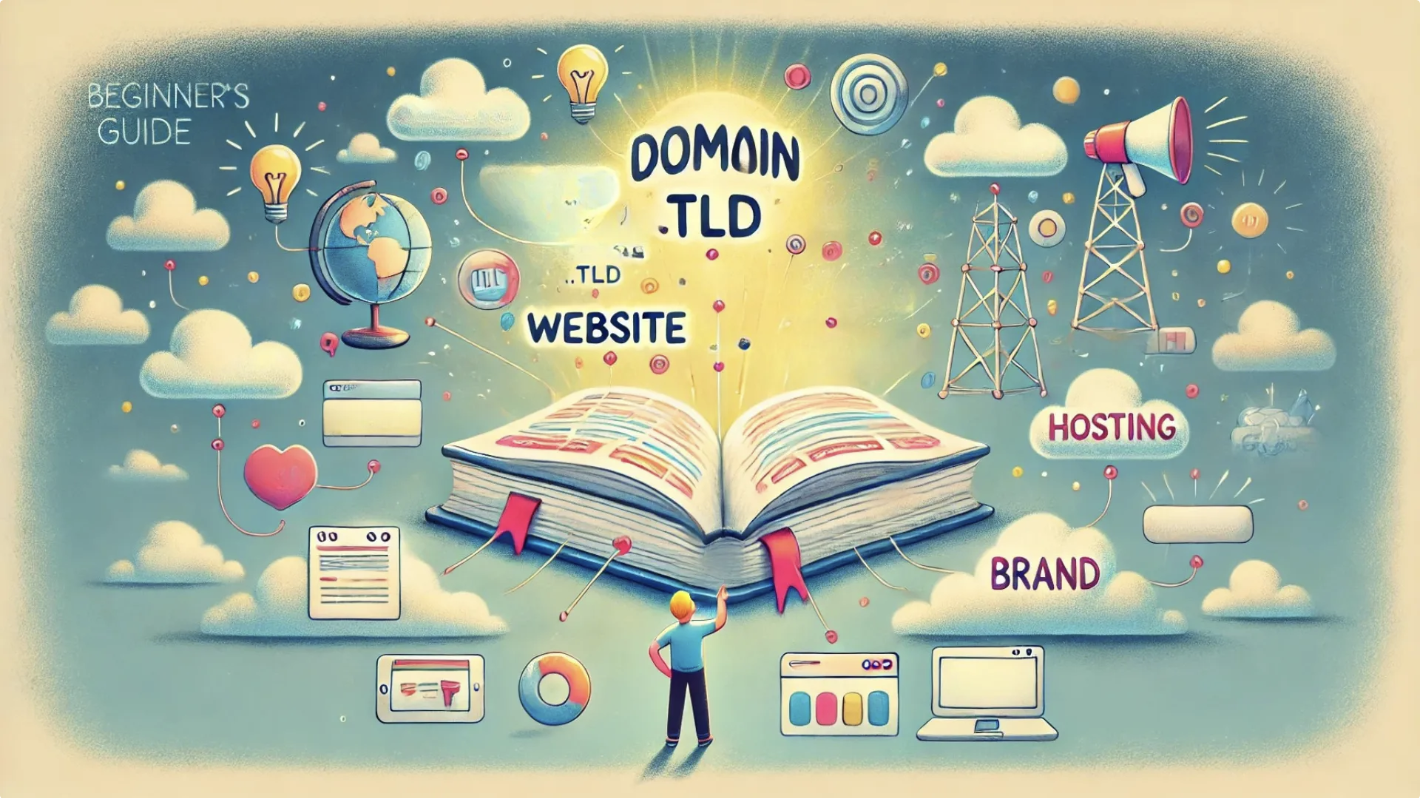Top 10 Domain Extensions for 2025: Which TLD Should You Choose?

Picking a domain name is hard. Picking a domain extension? Somehow harder.
In 2025, you're not just choosing between .com and .net. You're staring down a list of hundreds of options; some you recognize, some that sound like a typo, and some that feel like they were made up on the spot during a VC offsite.
You don’t need to know every single one. But, if you’re building something real, something people are going to remember, talk about, and type into a browser, you should understand the major players, (especially if you’re a startup and looking for the best TLD to build on). Especially the ones that signal credibility, clarity, and the kind of ambition that makes people pay attention.
Below is a breakdown of the most important domain extensions today. We’ve included usage numbers, pros and cons, real-world examples, and what each one actually signals about your brand. Because in a world where your name is your entry point, choosing the right ending still matters.
✅ Top Commercial TLDs in 2025
1. .com
📈 Usage: ~157 million domains
💼 Why it matters: Still the gold standard. Instantly recognizable, globally trusted, and often the first thing people type, even if your actual extension is something else.
🧲 Examples: Think Google.com, Tesla.com, and Superhuman.com. When people talk about “owning the brand,” this is what they mean.
Best for: Pretty much everything. If you can get your brand’s .com, grab it and don’t look back.
2. .org
📈 Usage: ~11 million domains
🕊️ Why it matters: Traditionally used by nonprofits, communities, and open-source projects. Still deeply trusted, but increasingly adopted by for-profits with strong mission-driven messaging.
🧲 Examples: Wikipedia.org is the benchmark, but plenty of commercial ventures like Craigslist.org use it too.
Best for: Brands focused on transparency, purpose, and social good, or anyone looking to borrow some of that credibility.
3. .net
📈 Usage: ~12 million domains
📻 Why it matters: Once considered a tech-friendly fallback when .com was unavailable. Still recognized, but its heyday has passed.
🧲 Example: Battle.net from Blizzard still carries weight, but few modern brands lead with .net.
Best for: Legacy tech, infrastructure projects, or when your perfect .com is owned by a parking page from 2004.
4. .co
📈 Usage: ~3 million domains
🚀 Why it matters: Marketed as a global alternative to .com, .co feels lean, startup-friendly, and modern. It's technically Colombia’s country code, but nobody’s thinking about geography here.
🧲 Examples: AngelList.co and Ro.co helped normalize .co in tech circles.
Best for: Startups that move fast, care about aesthetics, and are willing to explain once that yes, it really is just ".co".
5. .io
📈 Usage: ~1 million domains
💡 Why it matters: The unofficial uniform of early-stage SaaS and developer tools. Technically the country code for the British Indian Ocean Territory, but practically a badge of modern tech.
🧲 Examples: Companies like Framer.io, Greenhouse.io, and Customer.io helped turn .io into a genre of its own.
Best for: B2B platforms, engineering-first companies, and anyone trying to sound like they’re running a YC-backed dev tool, even if they’re not.
6. .ai
📈 Usage: ~400,000+ domains (and growing fast)
🤖 Why it matters: Dominant among AI startups. Signals cutting-edge tech and an immediate link to machine learning, LLMs, or generative tools.
🧲 Examples: Scale.ai, Character.ai, and dozens of others that launch every week and hope you’ll remember them by name (or at least by domain).
Best for: Anything that wants to be perceived as futuristic, algorithmic, or venture-backable in under 12 months.
7. .xyz
📈 Usage: ~4 to 5 million domains
🔮 Why it matters: Weird, bold, and heavily marketed. .xyz is cheap, flexible, and embraced by Web3 and creative communities. Not for the faint of heart, but definitely memorable.
🧲 Example: ABC.xyz, used by Alphabet (Google’s parent company), was a credibility-defining moment for this TLD.
Best for: Builders with a “why not” mindset, crypto-native brands, and anyone who thinks .com is too basic.
🆙 Rising Commercial TLDs to Watch
8. .dev
📈 Usage: ~650,000 domains
🔧 Why it matters: Backed by Google and enforced as HTTPS-only, .dev is built specifically for developers and engineering teams. It’s fast, secure, and practical.
🧲 Example: Lovable.dev is a unicorn startup that wears its domain proudly.
Best for: Docs, APIs, open-source projects, and personal dev portfolios that need to look clean and legit.
9. .app
📈 Usage: ~800,000 domains
📱 Why it matters: Another Google-owned TLD that’s locked down with SSL and purpose-built for product-facing domains. Think mobile apps, SaaS tools, and launch pages.
🧲 Example: Cash.app is arguably the best-known domain using this extension.
Best for: App landing pages, consumer-facing products, and tools that want to look polished out of the gate.
10. .shop
📈 Usage: ~1.2 million domains
🛒 Why it matters: Built for ecommerce, .shop is increasingly popular with DTC brands and product-first founders. It’s clear, commercial, and relatively easy to secure.
🧲 Example: Netflix operates its official merchandise store at netflix.shop, where fans can purchase apparel, collectibles (like Squid Game and Stranger Things items), and themed gifts directly from the company .
Best for: Online stores, physical product brands, and ecommerce experiments you want to launch fast.
TL;DR – If You’re Choosing a Domain Extension Today
Don’t just ask “what’s available.” Ask what the domain says about you.
- .com is still the gold standard, but it’s no longer your only option.
- .org, .co, .io, and .ai are commercially viable if paired with strong branding.
- .xyz, .dev, and .app are fast-growing and perfect for specific audiences.
- .net still works, but mostly if you’re building a retro search engine or a very polite VPN.
For a deeper dive on the risks and rewards of modern TLDs, check out:
- The Hidden Cost of a Bad TLD
- The Rise of Scam Domains
- How New TLDs Are Making .COM Domains Even More Expensive
Don’t Let the TLD Pick You
Your extension isn’t just a technical choice; it’s a positioning move. It tells people what kind of brand you’re building, who it’s for, and how serious you are about being remembered.
You don’t need to follow the trend. But you do need to pick something that fits.
Whether you're chasing the .com or building something bold on .xyz, we’ll help you lock it in.



